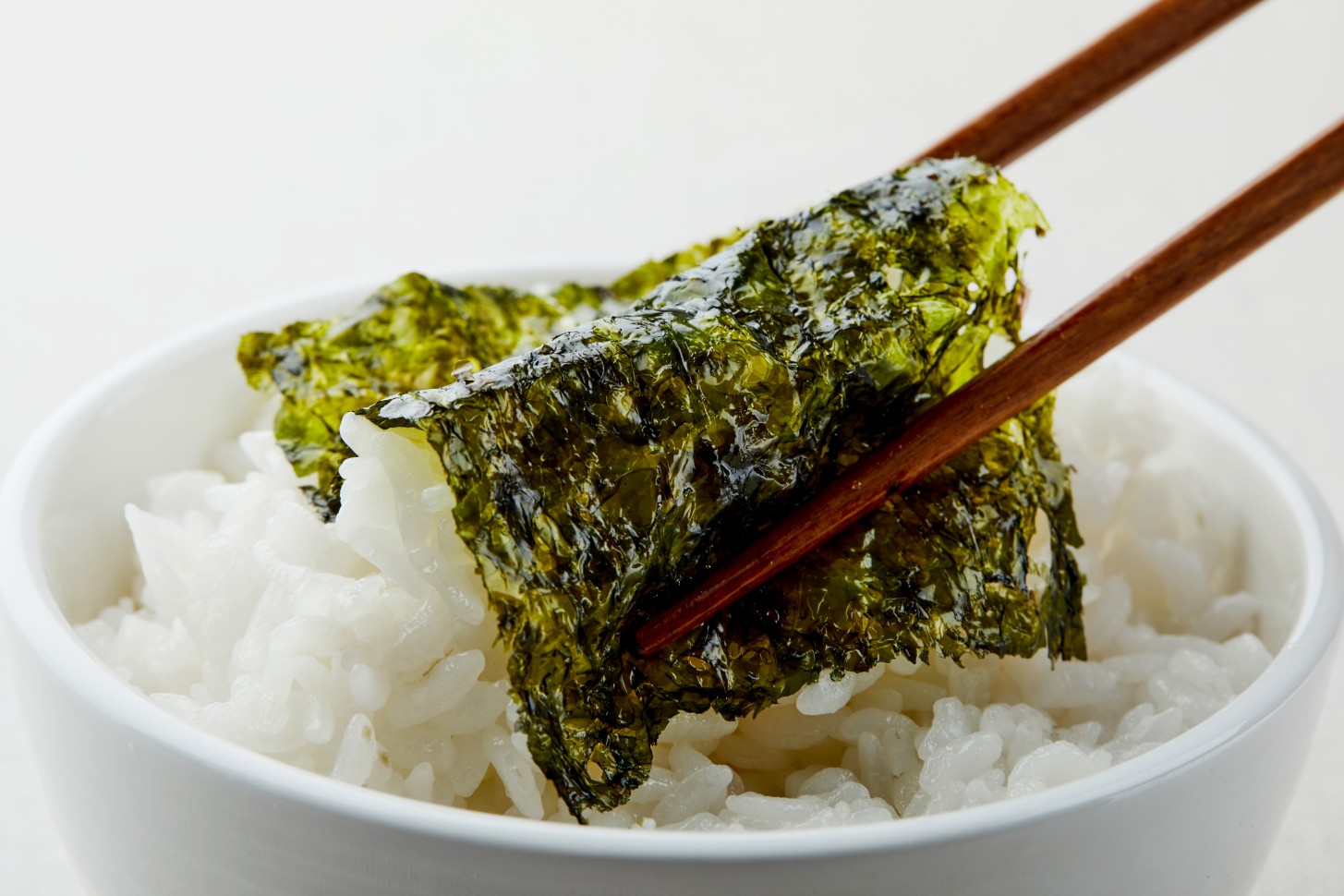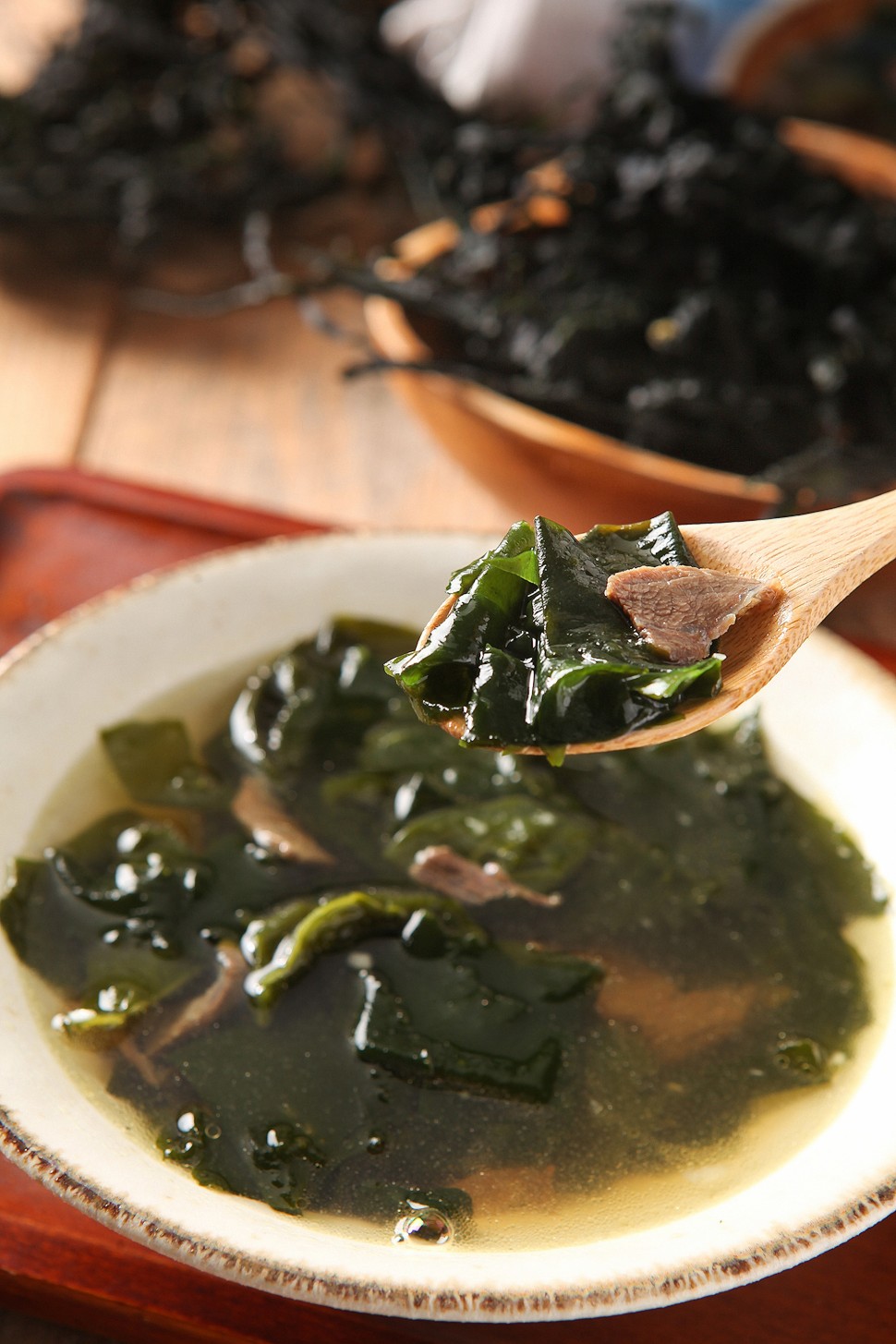[Sept] Seaweed: Koreans’ ‘lifelong companion’
Date Sep 21, 2022
 Gim (dried laver), is one of Koreans’ staple foods, usually eaten with rice. / Courtesy of gettyimagesbank
Gim (dried laver), is one of Koreans’ staple foods, usually eaten with rice. / Courtesy of gettyimagesbank
Seaweed is one of those things present in many Korean dishes that can strike newcomers as odd. But after trying a few of the dishes that contain bits of seaweed, or come wrapped in crinkly black-green laver, most people are likely to develop a taste, if not a craving, for it.
A wide variety of seaweed from different parts of the Peninsula is served on Korean tables. They are harvested from tidal flats, seashores and coastal estuaries to farms on the open sea.
These marine plants make their way into various types of foods, and they serve diverse purposes while presenting different flavors. Seaweed can be used in soups or as wraps, and one kind has enjoyed popularity on its own as a healthy alternative to potato chips.
The most popular variety is dried laver, known simply as gim, which comes from a few varieties of red algae scraped from rocks by the seashore in the southern regions of the Peninsula. The collected material is usually dried and formed into flat sheets. These sheets can be used as wraps for eating rice, or used to make gimbap rolls which can also contain meat, fish or vegetables. It can also be fried or roasted with sesame oil which creates an especially addictive flavor. Despite its naturally salty taste, gim is considered to be extremely healthy, containing protein, thiamine, riboflavin and vitamins A, B6 and B12, as well as mineral salts and essential amino acids.
 Miyeokguk, a common post-childbirth home remedy in Korea to help women replenish nutrients. Many Koreans also eat the soup on the morning of their birthday to honor their mother. / Courtesy of gettyimagesbank
Miyeokguk, a common post-childbirth home remedy in Korea to help women replenish nutrients. Many Koreans also eat the soup on the morning of their birthday to honor their mother. / Courtesy of gettyimagesbank
A popular kelp, miyeok (sea mustard), is traditionally collected from the deep sea by haenyeo, Korea’s famed female divers. Though haenyeo are mostly associated with Jejudo Island, it is the haenyeo from Jindo Island off Jeollanam-do Province or those in Tongyeong in Gyeongsangnam-do Province who harvest most of the wild miyeok. This type of kelp is also very healthy, containing high amounts of calcium, iodine, sodium, thiamine and niacin, as well as a hefty helping of omega-3 fatty acids. Unlike gim, which is often enjoyed raw, the slippery-textured miyeok is usually boiled thoroughly and served in a soup, called miyeokguk.
“K Food: Secrets of Korean Flavors,” a book series published in September last year with support from the Ottogi Ham Taiho Foundation, lists several other types of Korean seaweed, including parae (green laver) and dasima, a type of kelp leaf that makes a handy wrap for ssam dishes.
The book goes as far as to say that seaweed is “Koreans’ lifelong companion.”
The main reason for this accolade is the mineral-rich miyeokguk. It is consumed by Korean women after giving birth to replenish depleted nutrients. It is also believed to help with milk secretion, and for this reason, it is said that the first food a Korean child tastes is miyeokguk, albeit through their mother’s breast milk.
The custom of mothers eating miyeokguk for the first few months after giving birth is widely believed to date to the Goguryeo Kingdom (37 BCE to 668 CE), when whales were observed eating sea mustard after giving birth.
But Koreans don’t just eat miyeokguk after giving birth. It is considered a lifelong companion because many of them have it every year for breakfast on their birthday, as a way to honor their mother.
The only time miyeokguk is considered bad to eat is on test days. Possibly because kelp is slippery, the soup gave birth to a common idiom for slipping up on or failing a test: “I ate miyeokguk” is akin to “I bombed” in English. For this reason, Koreans think it is bad luck to eat miyeoguk on the day of an exam.
“Seaweed is one of the most nutritional foods imaginable, but Koreans also have a magnificent imagination for what to do with it, resulting in its wide use to fortify, flavor and act as a foundation for dishes,” according to Jennifer Flinn, a professor at Kyung Hee University and a scholar of food anthropology.
So if you are presented with a dish of seaweed, don’t be afraid to give it a try, and soon enough you may find yourself going back for more – just make sure you aren’t taking any tests that day.
**If you have any questions about this article, feel free to contact us at kocis@korea.kr.**

The Ministry of Culture, Sports and Tourism's "Korea Here & Now" work can be used under the condition of "Public Nuri Type 1 (Source Indication)."




